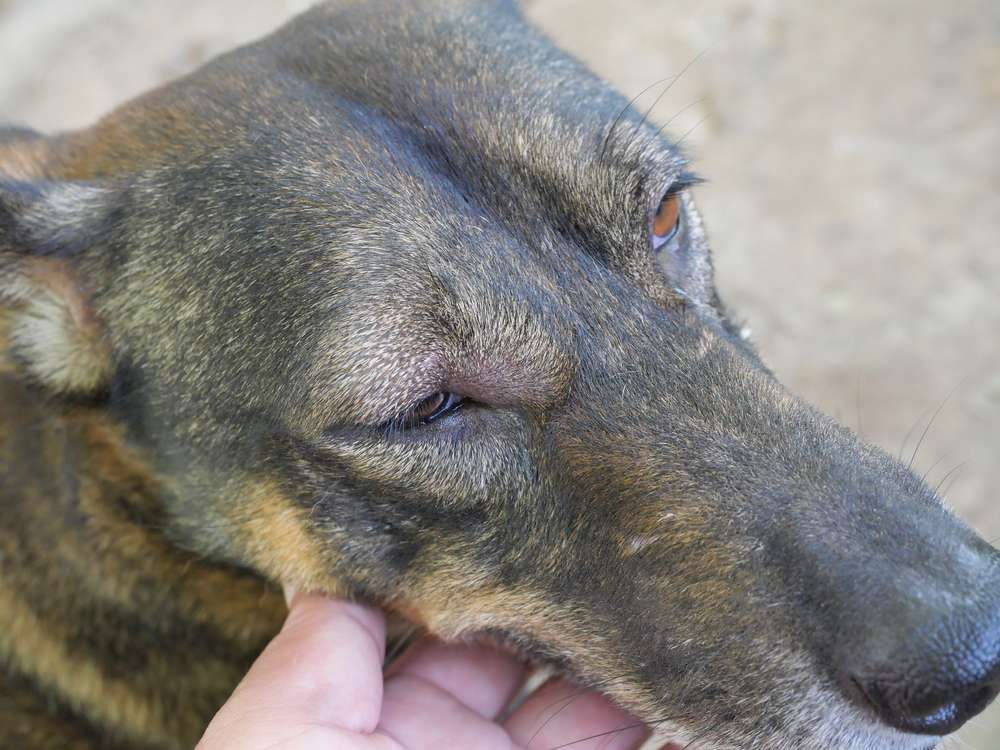Key Takeaways:
- Ear infections in dogs are common and can be caused by various factors such as allergies, moisture, or foreign objects.
- Common symptoms of ear infections in dogs include scratching at the ears, shaking the head, discharge or odor from the ears, and redness or swelling.
- Regular cleaning and proper drying of a dog's ears can help prevent ear infections.
- If your dog has an ear infection, it is important to seek veterinary care for proper diagnosis and treatment.
- Avoid using any home remedies or over-the-counter medications without consulting a veterinarian as they may worsen the condition or cause harm to your dog.
Are you a dog lover? Do you want to ensure that your furry friend stays happy and healthy? Then understanding the topic of ear infections in dogs is essential. Ear infections are a common ailment among our canine companions, but they can cause discomfort and even lead to more serious health issues if left untreated. By delving into this subject, you will gain valuable knowledge on how to prevent, identify, and treat ear infections in dogs, ensuring that your four-legged friend stays wagging their tail and enjoying life to the fullest. So let's dive into the world of ear infections in dogs and become empowered pet owners who can provide the best care for our beloved companions!
Understanding Ear Infections in Dogs: Causes and Symptoms
Causes of Ear Infections in Dogs
Ear infections in dogs can be caused by a variety of factors. One common cause is the buildup of wax and debris in the ear canal, which creates a warm and moist environment perfect for bacteria or yeast to grow. Other causes include allergies, foreign objects lodged in the ear, hormonal imbalances, or underlying health conditions. It's important to note that certain breeds with floppy ears, like Cocker Spaniels or Basset Hounds, are more prone to ear infections due to poor air circulation.
Symptoms of Ear Infections in Dogs
Recognizing the symptoms of an ear infection is crucial for early detection and treatment. If your furry friend is constantly scratching their ears or shaking their head excessively, it could be a sign of discomfort. You may also notice redness or swelling around the ear area, a foul odor coming from the ears, or discharge that ranges from yellowish to brownish in color. Additionally, some dogs may show signs of pain when their ears are touched. If you notice any of these symptoms, it's best to consult with your veterinarian for proper diagnosis and treatment.
Recognizing Ear Infections in Dogs: Signs to Look Out For
Scratching and Head Shaking
One telltale sign that your dog may have an ear infection is excessive scratching or rubbing of their ears. If you observe them vigorously scratching at their ears with their paws or rubbing against furniture or carpets, it's likely they're experiencing discomfort caused by an infection. Another common behavior is head shaking - if your dog repeatedly shakes its head from side to side as if trying to dislodge something from its ears, this could also indicate an ear infection.
Unusual Odor and Discharge
When a dog has an ear infection, you may notice a distinct and unpleasant odor coming from their ears. It can be described as musty or yeasty. Additionally, there may be discharge present in the ear canal. This discharge can vary in color and consistency, ranging from yellowish to brownish and having a thick or watery texture. If you observe any unusual odor or discharge, it's important to have your dog's ears examined by a veterinarian.
Are Some Dog Breeds More Prone to Ear Infections?
Certain dog breeds are more susceptible to ear infections due to their anatomy and genetics. Breeds with long, floppy ears like Basset Hounds, Cocker Spaniels, or Beagles are especially prone to ear infections because their ears provide a warm and moist environment that promotes bacterial or yeast growth. Dogs with narrow ear canals, such as Poodles or Shih Tzus, also have increased risk as it hampers proper air circulation within the ear.
Breeds with Hair in Their Ears
Some breeds have hair that grows inside their ear canals, making them more prone to infections. Breeds like Schnauzers, Poodles, or Lhasa Apsos fall into this category. The hair can trap debris and moisture inside the ears, creating an ideal environment for bacteria and yeast to thrive.
Dog Activities
Certain activities can increase the likelihood of developing an ear infection. Dogs that frequently swim are at higher risk since water trapped in the ears creates a perfect breeding ground for bacteria. Similarly, dogs that live in dusty environments or frequently stick their heads into bushes may introduce foreign objects or allergens into their ears, leading to infections.
Preventing Ear Infections in Dogs: Tips for Pet Owners
Regular Ear Cleaning
One of the best ways to prevent ear infections in dogs is by regularly cleaning their ears. Use a veterinarian-recommended ear cleaner and gently wipe the outer part of the ear with a cotton ball or soft cloth. Avoid inserting anything into the ear canal, as this can cause injury. Regular cleaning helps remove excess wax and debris, reducing the chances of infection.
Dry Ears Thoroughly
After swimming or bathing your dog, make sure to thoroughly dry their ears with a clean towel. Moisture left inside the ears can create an environment conducive to bacterial or yeast growth. Gently wipe the inside of the ear flap and use a dry cotton ball to absorb any moisture from the ear canal.
Monitor Allergies and Diet
Allergies can contribute to ear infections in dogs. Keep an eye out for any signs of allergies, such as excessive itching or redness on other parts of your dog's body. Additionally, providing a balanced diet that meets your dog's nutritional needs can help strengthen their immune system and reduce the likelihood of infections.
Treating Ear Infections in Dogs: Common Methods and Remedies
Veterinary Examination
If you suspect your dog has an ear infection, it's crucial to consult with a veterinarian for proper diagnosis and treatment. The vet will examine your dog's ears using specialized tools and may take samples for laboratory analysis to identify the specific cause of the infection.
Medication and Ear Drops
Treatment for ear infections often involves medications prescribed by a veterinarian. These may include antibiotics to combat bacterial infections or antifungal drugs for yeast-related infections. In some cases, topical medications such as ear drops may be recommended to help clear up the infection.
Cleaning and Maintenance
Along with medication, proper cleaning and maintenance of your dog's ears are essential for effective treatment. Your veterinarian will provide instructions on how to clean your dog's ears safely and may recommend specific ear cleaners or solutions. Regular cleaning can help remove debris and promote healing.
Can a Dog's Ear Infection Spread to Other Parts of Their Body?
Yes, if left untreated, an ear infection in dogs can potentially spread to other parts of their body. Bacteria or yeast from the infected ears can migrate to nearby areas such as the skin around the ears, face, or neck, causing secondary infections. Additionally, if the infection becomes severe or chronic, it can spread to the middle or inner ear, leading to more serious complications and affecting your dog's balance and hearing.
Importance of Timely Treatment
Early detection and treatment are crucial to prevent the spread of ear infections in dogs. If you notice any signs of an ear infection in your furry friend, such as excessive scratching or discharge, it's important to seek veterinary care promptly. With proper diagnosis and timely treatment, you can help ensure that the infection is contained and does not lead to further complications.
In conclusion, ear infections are common in dogs and can cause discomfort and pain. It is important for dog owners to regularly clean their pet's ears and seek veterinary care if they notice any signs of infection to ensure their furry friend stays healthy and happy.
What are the symptoms of a bad ear infection in dogs?
Certain dogs may not exhibit any visible symptoms, but you might observe that your dog hesitates to chew or appears to experience discomfort while opening its mouth. It may also shake its head or scratch at the affected ear. Additionally, your dog might develop a tilt of its head, typically towards the side of the infected ear, and may even lean, collapse, or roll in the direction of the infected side.
Can a dogs ear infection go away on its own?
Typically, a dog's ear infection will not resolve itself without treatment. Additionally, if you delay treating the infection, it can become harder to manage. Neglected ear infections can result in ongoing problems, hearing impairment, and potentially costly surgical procedures.
What are the three types of ear infections in dogs?
Just like veterinarians are aware, there are three types of ear infections that dogs can experience - otitis externa, media, and internal - each affecting different areas of the ear. These conditions are commonly seen in dogs, particularly those with floppy ears like Basset Hounds and Cocker Spaniels.
What can I give my dog to get rid of ear infection?
They might utilize a specially formulated ear cleaning solution or administer a medication directly onto the affected area. In more serious instances, the veterinarian may prescribe anti-inflammatory drugs or oral antibiotics for your pet. It is likely that your vet will prescribe a topical medication for your dog.
What can I give my dog for a bad ear infection?
The vet will clean your dog's ears with a special cleanser and may give you prescription ear drops to use at home. In more serious cases of ear infections, the vet may also prescribe oral antibiotics and anti-inflammatory medications.
How do you treat a dog's ear infection without going to the vet?
If your dog's ear is not experiencing a lot of pain, you can utilize a dog ear cleaner to assist in eliminating wax build-up. Apply a small quantity of the cleaner into the ear and softly massage the bottom of the ear canal. Utilize a damp cotton ball to clear away any discharge near the entrance of the ear canal.
















